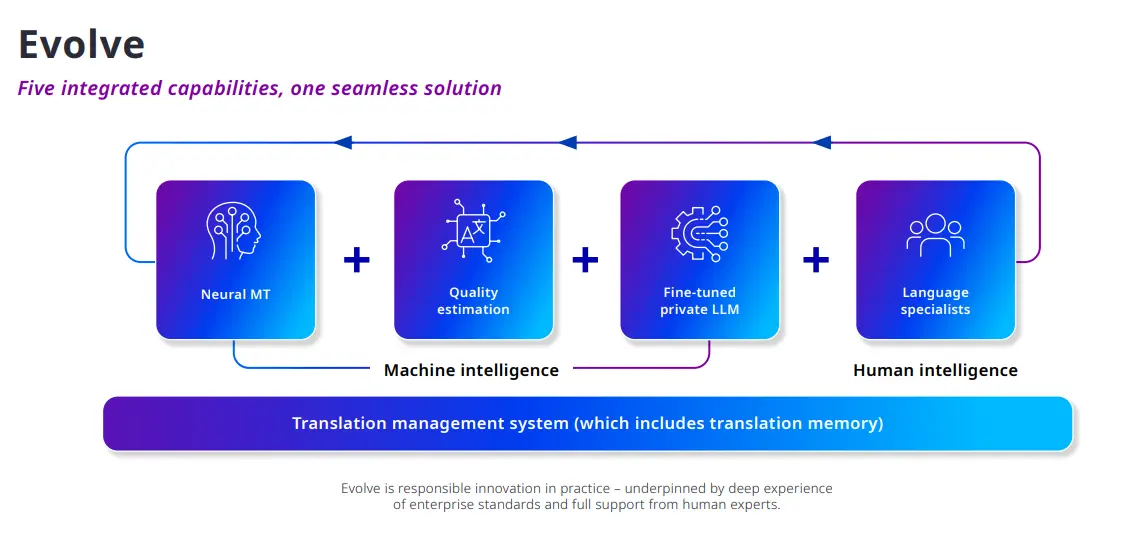The evolution of content memory: How AI transforms translation memory into intelligent content management

In the ever-evolving landscape of content management, artificial intelligence (AI) is emerging as a transformative force. Traditionally, the concept of 'memory' in content management was closely tied to translation memory (TM). TM systems, which store and reuse previously translated segments, have long been essential tools for translators. However, as the volume and complexity of global content continues to grow, the limitations of traditional TM systems become increasingly apparent.
Enter AI, with its ability to revolutionize not just translation memory, but the entire spectrum of content memory—evolving it into a dynamic, intelligent system that enhances knowledge extraction, semantic tagging, and discoverability.
The Basics of translation memory
Let's start with the basics.
Translation memory (TM) is a database that stores segments of text and their corresponding translations. It helps translators by suggesting previously translated segments that match the current text, improving efficiency and consistency.
While traditional TM systems have primarily been static, we believe that the future of translation management systems (TMS) as well as the future of 'global content' or 'localization' lies in continuous innovation. Along with TMs and TMSs, Machine and Human intelligence will overcome current limitations and redefine how complex translations and large-scale content management are handled, ensuring ever-improving efficiency and effectiveness by evolving to incorporate advanced context awareness and adaptive learning.
Here's an example of how we're using a TMS (which includes a centralized translation memory) as part of Evolve, a critical element that brings together all the components in our linguistic AI solution.

The emergence of AI in content management
AI as an organizer of content memory
- Understand context and semantics: AI systems analyze the context and semantics of content, enabling more accurate and relevant translations and content suggestions.
- Extract knowledge: Through machine learning algorithms, AI can extract valuable insights and knowledge from vast amounts of content, improving decision-making and strategic planning.
- Semantic tagging and ontologies: AI employs taxonomies and ontologies to semantically tag content, enhancing discoverability and ensuring that information is easily accessible.
Benefits of AI-driven content memory
- Improved accuracy and consistency: By understanding context and semantics, AI ensures that translations and content generation are more accurate and consistent.
- Enhanced efficiency: AI reduces the time and effort required to manage and translate large volumes of content, accelerating time-to-market for global content.
- Better handling of complex language nuances: AI's ability to learn and adapt allows it to handle complex language nuances and cultural contexts more effectively.
Real-world applications
- Marketing: AI enhances personalized marketing efforts by understanding customer preferences and delivering tailored content.
- E-commerce: AI improves product descriptions and customer support by providing accurate translations and relevant content suggestions.
- Legal and Healthcare: AI-driven systems manage complex documents and regulatory information, ensuring compliance and accuracy.
The future of content memory with AI
- Enhanced Knowledge Extraction: AI systems will become even more adept at extracting and utilizing knowledge from content, driving innovation and strategic insights.
- Advanced Semantic Tagging: The use of taxonomies and ontologies will continue to evolve, improving the discoverability of content across platforms.
- Greater Context Awareness: AI will further refine its understanding of context, making content management systems more intuitive and user-friendly.
